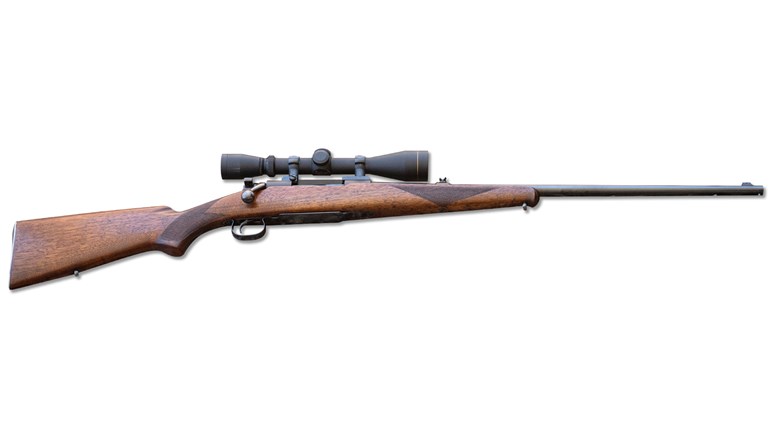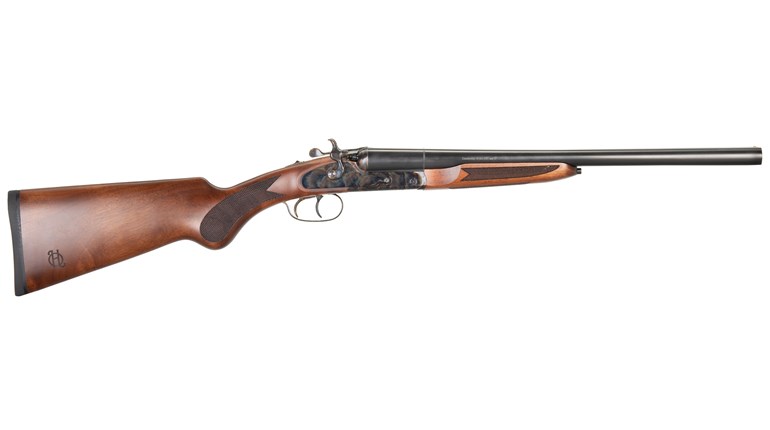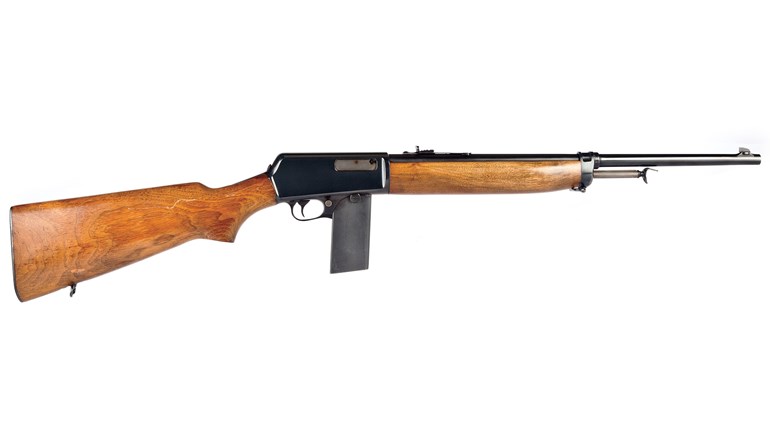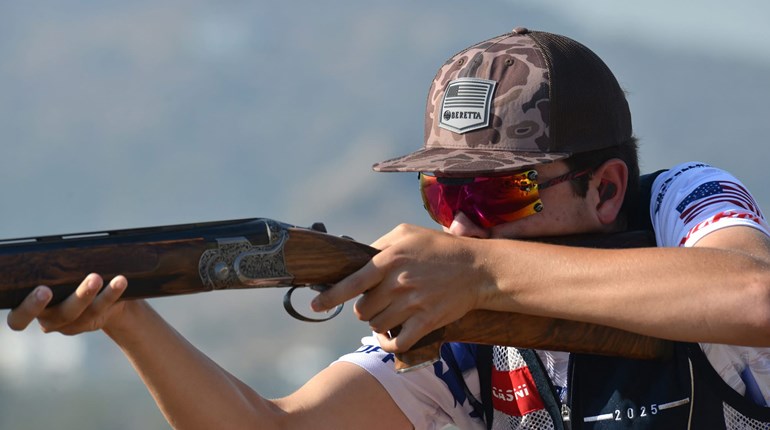
Some guns have a certain pop to their aesthetics that draws us in. We can argue the merits of one firearm design over another, but—proof that we're all just kids at heart—if we see a gun that looks cool, we want to shoot it. Take the aggressive black-on-chrome appearance of the Winchester Super X Pump (SXP) Marine Defender shotgun. Even my father—who thinks the only shotguns worth owning are double barrels of European origin—took one look and just had to run some shells through it.
However, while I'm sure Winchester's marketing team doesn't mind the gun's ability to stand out on shelves, its flashy exterior is tied to purpose-built engineering. The SXP Marine Defender is a shotgun made to save lives while withstanding the harshest of conditions.
It's not the first time Winchester designed a shotgun for this role. The company previously made the Model 1300 Marine Defender, which I'd argue sported the most underrated pump-action of its day.

"The original concept [for the 1300 Marine Defender] was to provide a solution for law enforcement, who work in corrosive environments, such as on ships and in the oil fields of Alaska," said Glenn Hatt, Winchester's firearms product manager. "It was sold to many agencies, and it quickly became a favorite of Alaskan hunters and guides who needed a weather warrior in camp for protection as well."
Though the 1300 Marine Defender ceased production in 2006 (along with the rest of the 1300 line) the SXP Marine Defender is essentially the next generation. Like its predecessor, the SXP's fore-end is guided by dual action bars, and sturdy lockup is achieved by a four-lug, rotary bolt head. Upgrades to the SXP include threads for Invector-Plus chokes (a cylinder tube is included with the shotgun) and a drilled-and-tapped receiver to accept the many optics now available.
The SXP Marine Defender's most intriguing and visibly striking feature, however, is the hard-chrome plating, designed to fend off the corrosive nature of damp and possibly salty environments. Chrome coats the 18-inch barrel's exterior, the magazine tube and the action bars. The barrel and chamber are internally plated as well. Why chrome?
"We have a standard corrosion and erosion test where we subject the product to abrasive and corrosive chemicals for a period of time," Hatt explained. "We also perform a grit test where we measure the volume—in liters of sand—required to remove a given finish. In our testing, hard chrome has scored the highest in every category."
According to Winchester, the chrome greatly outperforms popular finishes such as bluing, Parkerizing and Cerakote.
"Many treatments just provide a layer of oxidation or, in the case of Cerakote, a layer of paint," Hatt said. "These offer virtually no erosion protection. They offer some corrosion protection, but don't come close to true hard-chrome plating."

While steel is necessary to adequately withstand chamber pressures, 7075 T6 anodized aluminum was selected for the SXP Marine Defender's receiver. Aluminum is lighter than steel, easier to machine and, best of all, highly corrosion resistant. The surface layer can oxidize, but it contains no iron and therefore can't rust. Accordingly, it isn't necessary to chrome-plate the receiver.
"Aluminum is just a better material for harsh environments," Hatt said. "A steel receiver would've raised the cost of the gun, while adding no value to the end consumer. It was an easy decision to make."
A composite stock and fore-end round out the gun's weather-proof setup. The fore-end is ribbed and, in my range test, I found it to provide a solid grip. Upon firing the gun, rearward motion needed for cycling is initiated by what Winchester calls its "inertia-assisted action." The stouter the load, the more I noticed it. With several high-brass loads, the gun almost ran itself. Overall the SXP's action is not the slickest on the market, but it's pretty good and—like the 1300—I believe it's underrated.
The .742 back-bored barrel with the included cylinder choke threw a consistently even pattern with several types of birdshot (the average breadth was 6 to 8 inches at 15 yards) and buckshot. Recoil impulse belied the SXP Marine Defender's rather light 7-pound, 5-ounce weight thanks to an Inflex recoil pad—arguably the best you'll find on a scattergun in this price range.

Aiming is achieved with a fiber-optic front sight clamped to the barrel. Interestingly, the shotgun also has a front brass bead. If you prefer this lower-tech option, just slide off the fiber-optic attachment.
In another carry-over from the 1300, the crossbolt safety is positioned just forward of the trigger guard. I believe this is the ideal placement for a tactical shotgun, because it allows the index finger to quickly and naturally slide from safety to trigger.
The fore-end release is on the left side of the receiver. Once clicked into place, the action may be opened—no need to continue applying pressure to the release with one hand while cycling the fore-end with the other. It's a nice, subtle feature on an overall well-thought-out gun.
If you're interested in a shotgun to safeguard your boat or cabin—or just one that you don't have to worry about rusting—the SXP Marine Defender is well worth consideration.
Specifications
Manufacturer: Winchester Repeating Arms; (800) 945-5237
Action Type: Pump-action shotgun
Gauge: 12; 3-inch chamber
Capacity: 5+1 (2.75-inch shells)
Barrel: 18.5 inches; chrome-plated steel
Sights: Fiber-optic and brass front beads; receiver drilled and tapped for mounting optics
Stock: Synthetic
Length of Pull: 13.75 inches
Length: 38.5 inches
Weight: 7 pounds, 5 ounces
Accessories: Invector-Plus cylinder choke tube, trigger lock, magazine plug
MSRP: $399.99





































